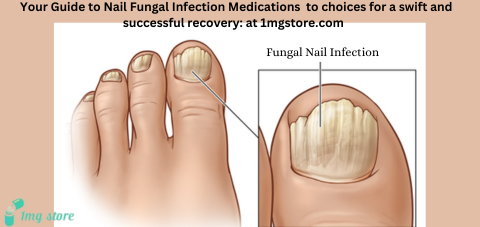
Fungal Nail Infections
-
Generic: Terbinafine HClEquivalent Brand: Lamisil30 Tablet/s$16.12
-
Generic: AmorolfineEquivalent Brand: Locetar1 Cream$5.40
-
-
-
Generic: CiclopiroxEquivalent Brand: Loprox1 Unit$10.63
-
Generic: AmorolfineEquivalent Brand: Loceryl1 Unit (2.5ml)$14.50
-
-
Fungal Nail Infections: A Comprehensive Guide to Understanding and Treating Onychomycosis
Introduction:
Fungal nail infections, clinically known as onychomycosis, represent a common yet often underestimated health concern that affects millions of individuals globally. This category of infections, characterized by the invasion of fungi into the nails, can have a significant impact on both the aesthetic appearance and overall health of affected individuals. This in-depth guide explores the importance of medicines designed for fungal nail infections, shedding light on the intricacies of onychomycosis, its causes, symptoms, and the crucial role medications play in its diagnosis and treatment.
Understanding Onychomycosis:
Onychomycosis occurs when fungi, such as dermatophytes, yeasts, or molds, invade the nails, leading to a range of symptoms and potential complications. The condition often begins as a small spot under the tip of the nail and can gradually spread, causing discoloration, thickening, and deformation of the nails. Fungal nail infections commonly affect toenails, given the warm and moist environment within shoes, but fingernails can also be susceptible.
The Importance of Addressing Fungal Nail Infections:
Aesthetic Concerns:
Fungal nail infections can have a visible impact on the appearance of nails, causing discoloration that ranges from white or yellow to brown. As the infection progresses, nails may become thickened, brittle, and crumbly. Medications designed for fungal nail infections are crucial in addressing these aesthetic concerns, promoting the restoration of healthy and cosmetically appealing nails.
Impact on Quality of Life:
The visible signs of onychomycosis can significantly affect an individual's quality of life. Discomfort, embarrassment, and self-consciousness may arise, especially in social situations where bare feet or hands are exposed. Medications play a pivotal role in alleviating these concerns, allowing individuals to regain confidence and enjoy improved overall well-being.
Preventing Complications:
Untreated fungal nail infections can lead to complications such as secondary bacterial infections, pain, and difficulty walking or using hands in severe cases. Medications for fungal nail infections are essential in preventing the progression of the infection and reducing the risk of complications, promoting long-term nail health.
Addressing Underlying Causes:
Fungal nail infections often result from exposure to warm and damp environments, such as communal showers or swimming pools. Additionally, factors like age, diabetes, weakened immune systems, and poor circulation can contribute to susceptibility. Medications not only treat the visible symptoms but also address the underlying causes, helping to prevent recurrent infections.
Comprehensive Treatment Approaches:
The treatment of fungal nail infections often requires a multifaceted approach. Medications come in various forms, including topical solutions, oral tablets, and, in some cases, a combination of both. This comprehensive approach ensures that the medication reaches the site of infection, effectively targeting and eliminating the invading fungi.
Patient Compliance and Persistence:
Treating fungal nail infections requires patience and consistency. Medications for onychomycosis are designed to be used over a specified duration, and adherence to the prescribed regimen is crucial for successful outcomes. Educational resources and support from healthcare professionals contribute to patient compliance, enhancing the effectiveness of the treatment.
Improving Nail Health:
Fungal nail infections can compromise the structural integrity of nails, leading to brittleness and increased susceptibility to damage. Medications not only eliminate the fungi causing the infection but also contribute to the overall improvement of nail health. This includes promoting normal nail growth and preventing future infections.
Enhanced Dermatological Care:
Incorporating medications for fungal nail infections into dermatological care emphasizes a holistic approach to skin health. These medications, whether applied topically or taken orally, contribute to the comprehensive management of skin and nail conditions, ensuring optimal outcomes for individuals seeking professional dermatological care.
Conclusion:
In conclusion, recognizing the importance of medicines designed for fungal nail infections is crucial in addressing the multifaceted challenges posed by onychomycosis. From aesthetic concerns and quality of life improvements to preventing complications and enhancing overall nail health, these medications play a central role in the comprehensive care of individuals affected by fungal nail infections. As we navigate the intricacies of dermatological health, understanding and prioritizing the treatment of onychomycosis contribute to a healthier and more confident community.


